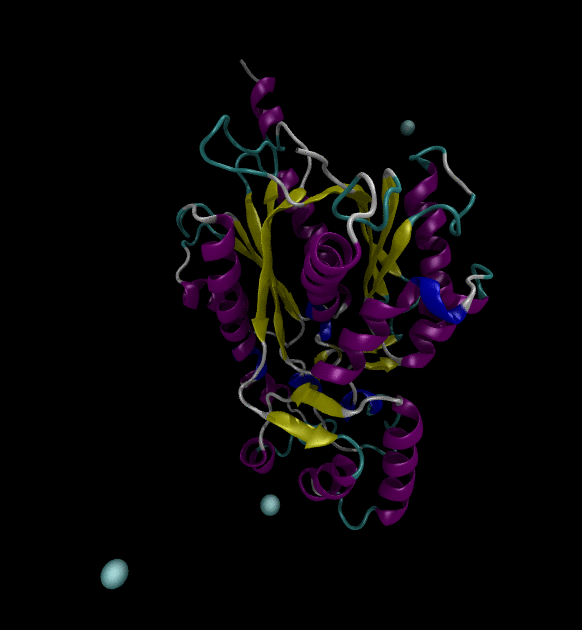AWS Compute Blog
Tag: Amazon EC2
Using new vCPU-based On-Demand Instance limits with Amazon EC2
This post is contributed by Saloni Sonpal, Senior Product Manager, Amazon EC2 As an Amazon EC2 customer running On-Demand Instances, you can increase or decrease your compute capacity depending on your application’s needs, and only pay for what you use. EC2 implements instance limits, which give you a highly elastic experience while protecting you from […]
Sharing automated blueprints for Amazon ECS continuous delivery using AWS Service Catalog
This post is contributed by Mahmoud ElZayet | Specialist SA – Dev Tech, AWS Modern application development processes enable organizations to improve speed and quality continually. In this innovative culture, small, autonomous teams own the entire application life cycle. While such nimble, autonomous teams speed product delivery, they can also impose costs on compliance, […]
Optimizing Amazon ECS task density using awsvpc network mode
This post is contributed by Tony Pujals | Senior Developer Advocate, AWS AWS recently increased the number of elastic network interfaces available when you run tasks on Amazon ECS. Use the account setting called awsvpcTrunking. If you use the Amazon EC2 launch type and task networking (awsvpc network mode), you can now run more […]
Using AWS App Mesh with Fargate
This post is contributed by Tony Pujals | Senior Developer Advocate, AWS AWS App Mesh is a service mesh, which provides a framework to control and monitor services spanning multiple AWS compute environments. My previous post provided a walkthrough to get you started. In it, I showed deploying a simple microservice application to Amazon ECS […]
New: Using Amazon EC2 Instance Connect for SSH access to your EC2 Instances
This post is courtesy of Saloni Sonpal – Senior Product Manager – Amazon EC2 Today, AWS is introducing Amazon EC2 Instance Connect, a new way to control SSH access to your EC2 instances using AWS Identity and Access Management (IAM). About Amazon EC2 Instance Connect While infrastructure as code (IaC) tools such as Chef and Puppet […]
Optimizing Network Intensive Workloads on Amazon EC2 A1 Instances
This post courtesy of Ali Saidi, AWS, Principal Engineer At re:Invent 2018, AWS announced the Amazon EC2 A1 instance. The A1 instances are powered by our internally developed Arm-based AWS Graviton processors and are up to 45% less expensive than other instance types with the same number of vCPUs and DRAM. These instances are based […]
Using partition placement groups for large distributed and replicated workloads in Amazon EC2
This post is contributed by Ankit Jain – Sr. Product Manager, Amazon EC2 and Harsha Warrdhan Sharma – Global Account Solutions Architect at AWS Before we introduced partition placement groups, customers deployed large distributed and replicated workloads across multiple Availability Zones to reduce correlated failures. This new Amazon EC2 placement strategy helps reduce the likelihood […]
GPU workloads on AWS Batch
Contributed by Manuel Manzano Hoss, Cloud Support Engineer I remember playing around with graphics processing units (GPUs) workload examples in 2017 when the Deep Learning on AWS Batch post was published by my colleague Kiuk Chung. He provided an example of how to train a convolutional neural network (CNN), the LeNet architecture, to recognize handwritten digits […]
Getting started with the A1 instance
This post courtesy of Ali Saidi, AWS, Principal Engineer At re:Invent 2018 AWS announced the Amazon EC2 A1 instance. These instances are based on the AWS Nitro System that powers all of our latest generation of instances, and are the first instance types powered by the AWS Graviton Processor. These processors feature 64-bit Arm Neoverse […]
Building a tightly coupled molecular dynamics workflow with multi-node parallel jobs in AWS Batch
Contributed by Amr Ragab, HPC Application Consultant, AWS Professional Services and Aswin Damodar, Senior Software Development Engineer, AWS Batch At Supercomputing 2018 in Dallas, TX, AWS announced AWS Batch support for running tightly coupled workloads in a multi-node parallel jobs environment. This AWS Batch feature enables applications that require strong scaling for efficient computational workloads. Some of […]





